Crossing over to Crossovers
By John Gilbert
Can a big, spacious Tahoe or Suburban be effectively replaced by a Terrain, or an Encore? Can an Expedition or Explorer be effectively reduced in size to an Edge, or maybe an Escape? And how about Mazda, which celebrated when the full-sized CX-9 won North American Truck of the Year honors three years ago — can its tasks now be entrusted to the CX-5?
If you haven’t noticed, the players have been multiplying and shrinking at the same time, and at a record rate, and if you can’t tell the players without a program, examine the decreasing numbers. The X5 led to the X3, and now to the X1; the XC-90 is joined by the XC-60; the LR-3 now is joined by the LR-2; the highly successful Encore gave Buick a luxurious and popular vehicle and for an encore, it quickly created a diminutive cousin, the aforementioned Encore; and a decade after Toyota added a third-row seat and V6 power to enlarge the RAV4, it brought out a new RAV4 — smaller, and without the third row and V6.
Welcome to the new wave of crossovers, just in time to attract buyers who are crossing over so much that they — as much as the compact vehicles they are buying — define the term “crossover.”
Detroit automakers ran into serious financial problems a few years ago, partially because of a three-way collision at their economic intersection of dependence on high-profit but gas-guzzling large Sport Utility Vehicles, which ran into a faltering economy, right at the point of unprecedented rising gasoline prices. Government bailouts, discontinued models, and an entirely different way that consumers and auto-makers saw their business were the result, and it hasn’t abated.
Large SUVs plummeted in popularity, as buyers switched to smaller SUVs, which were called crossovers because they did the work of compact trucks, but were built on smaller car platforms, making them lighter, more agile, and more fuel-efficient. Maybe the kids had grown and left home, reducing the need for a large-family hauler, or maybe frighteningly low fuel economy figures pinched the budget, but downsizing made sense for a lot of reasons.
A decade ago, there were only about a half-dozen compact SUVs, but as virtually every manufacturer tries to outdo the competition with better and more compact small SUVs, now there are over 60, counting a few crossover-crossovers, with more coming out every year.
The popularity of crossover SUVs has also created a couple new segments of buyers. Large and midsize car customers are moving down as their kids depart, while some subcompact and compact buyers move up as their families grow. Both groups find that crossover SUVs house occupants and gear comfortably, and have joined the large-SUV buyers in downsizing to crossovers, pleased with sticker prices and fuel economy numbers that used to be the haven of only economy cars.
Here, then, are just a few of the new-breed of crossovers. Surely there will be more to come.
GMC TERRAIN
Perfect for buyers, as well as manufacturers, who feel the need to approach downsizing gradually, the Terrain is GMC’s version of the Chevrolet Equinox, but it definitely has more of a truck-like appearance. While shorter than the larger truck-based GM SUVs, it seems GMC felt the need to make the Terrain still look like a truck, albeit a truck with quicker reactions on its stubbier 185.3-inch length. As the new kid the Terrain is more versatile than the slightly larger and older Acadia, which, while similar in concept with front-wheel-drive/all-wheel-drive layout, comes only with the 3.6-liter V6, while the Terrain offers a base 2.4-liter with 182 horsepower, and adds the option of the rejuvenated 3.6 V6 with its 301 horsepower and 272 foot-pounds of trorque, and a 1,500-3,500-pound towing capacity and a 1,200-pound payload. Fuel economy shows 17 city 24 highway for the V6, with 20-29 for the AWD four.Together, the Acadia and Terrain combine for 30 percent of all GMC sales. New for 2013, the Terrain adds a high-end Denali version, loading up on luxury features. A lowered step-in and height, still leaves room for room for seven or eight passengers, depending putting three in the second row. Soft-touch dashboard material, with aluminum and wood, or wood-like, trim, the Denali has satin chrome and a real wood steering wheel. A 7-inch color touch screen is reconfigurable for Bluetooth, smartphone, voice recognition, and USB connectivity. Side and rear alerts, and a forward collision alert, plus lane departure warning and rear park assist are among features, and rear seat entertainment should ease any kids-on-trips issues. The test-drive Terrain Denali showed a quite-loaded sticker of $36,275 with the 4, and $40,425 with Denali trim packages that include cargo, trailering and navigation.
BUICK ENCORE
The Enclave has been such a huge hit for Buick that it makes sense to build a mini-Enclave, and the Encore pretty much fills that bill. Buick has done well in GM’s restructuring, and it is more of a global offering, with an engine first designed in Germany in a vehicle built in Korea, with its content 51 percent from Korea and 18 percent from China. Buick builds the comparatively small 1.4-liter 4-cylinder in the U.S., and it’s turbocharged to develop 140 horsepower and 148 foot-pounds of torque — more than adequate to power the smallest of all GM SUVs at 168.5 inches in length. It has dashing good looks and a lot of premium features, typical of Buick, and its front-drive platform works well with an Active on Demand all-wheel-drive system that uses a magnetic charge to engage a clutch at the rear axle when stopped to assure that you get some rear-drive push on start-up. Fuel economy has an EPA estimated 23 city and 30 highway, and compared to the larger and more luxurious Enclave, the Encore is quick-reacting and fun to drive as a 5-passenger vehicle. Bose active noise cancellation technology helps make the interior quieter, and the voice-activated IntelliLink on the full-color display gives it a luxury refinement. At a base price of $29,690, the loaded Encore Premium stands at $32,975 and includes 18-inch chrome wheels, navigation with the upgraded audio system are included as options.Front and rear Ultrasonic parking assist, the 7-inch screen with all its input jacks, remote steering wheel controls, rain-sensing wipers, heated leather seats, lane departure warning, Bluetooth, Bose premium audio, heated steering wheel, foglights, roof rack and remote starter system are all on the lengthy list of standard equipment.
HONDA CR-V
The acknowledged standard-bearer of the crossover SUV trend, Honda’s CR-V was totally redesigned for 2012 and retains its popularity with slight revisions for 2013. The high-tech 2.4-liter 4-cylinder now makes 185 horsepower and 163 foot-pounds of torque with a 5-speed automatic transmission as the only drivetrain. It works smoothly and efficiently, and adds AWD as an available option to the standard front-wheel drive. The system works well, with power going to the front wheels unless the computer detects the threat of slippage, when it apportions power to both axles. The exterior makeover makes the CR-V far more fashionable with a bold grille and stylish rear treatment. Electric power steering, stability control and brake assist completes an impressive safety resume, and interior features on the EX-L include leather seats, navigation with voice recognition and rear camera. The audio system upgrade has seven speakers with a subwoofer, and all the information connectivity features. Driver’s seat is 10-way power, and an EX feature to read and respond to text messages through the audio connectivity is a nice touch. Foglights and a large sunroof also are nice touches on the EX, which is the top of the line and has a sticker of $31,025 in the L (for Leather) upgrade. Fuel economy remains a mainstay with EPA numbers of 22 city and 30 highway.
FORD ESCAPE
For over a decade, Ford built its Escape into a stronghold as a spinoff of the Mazda Tribute design, but for 2013, the Escape jumps into its own new skin, with a high-style wedge front and neatly done rear in all-new package that lets the Escape rival larger SUVs, and outdoes many of them with technology. For example, Ford decided to go with fewer cylinders to gain fuel efficiency, and turbocharge the smaller engines if more power was desired — a feature called EcoBoost that runs throughout Ford products. In the Escape, the base engine is a 2.5-liter 4-cylinder with 168 horsepower and 170 foot-pounds of torque, running through a 6-speed automatic in either front or all-wheel drive. As the top option, a 2.0-liter EcoBoost 4 is turbocharged uyp to 240 horses and 270 foot-pounds of torque, lifting the Escape into the realm of 3,500-pound towing capability. Possibly the best compromise is a 1.6-liter 4 EcoBoost, which uses turbocharging to go beyond the 2.5 power with 178 horsepower and 184 foot-pounds of torque — a definite edge in power over the CR-V, for example. The turbocharging doesn’t hurt fuel economy, if you keep your foot away from power-surges, and EPA numbers go from the low to mid-20s to over 30 mpg. With Base S, SE, SEL, and top-line Titanium models, the price can rise from $23,295 to $35,630 for the Escape, which measures 178.1 inches in length. Even the base model is well equipped, with a variety of nav screens and design touches. Ford’s SYNC connectivity with voice-activated controls for phone and entertainment start in the SE and available features move up by model. Ford’s new-wave of technology includes Sony audio, premium leather seats, remote start, rear seat recline, ambient lighting, a power liftgate, and a brilliant bag-carrying feature, which is that when you approach the rear of a locked Escape, if you have the key fob on your person, you can wave one foot under the rear bumper and the hatch will spring open. Very handy.
KIA SORENTO
Somewhat subtlely, the Kia Sorento carved itself a nice niche in the midsize SUV bracket, outdistancing partner Hyundai’s Santa Fe. Both companies have companion smaller crossovers — Hyundai the Tucson and Kia the Sportage — but for 2014 both companies have completely redone their larger crossovers. The Hyundai Santa Fe now comes in long form or, as the Sport, in two-row form, both with catchy styling. It’s made in the Montgomery, Ala., plant. But 100 miles up into Georgia, Kia’s newly restyled Sorento is built in West Point, Ga., and it shows no indication of losing popularity. In fact, with a base 2.4-liter 4-cylinder pumped up to 191 horsepower and 181 foot-pounds of torque by using the direct-injection version, performance is improved by 16 horses. The V6 also is upgraded, dropping from 3.5 to 3.3 liters, but gaining in sophistication with direct injection, to 290 horsepower and 252 foot-pounds of torque. Both use a high-tech and smooth-shifting 6-speed automatic transmission. Fuel economy can reach EPA estimated 32 mpg, and while the V6 drops a bit in fuel economy, it takes the towing capacity up to 3,500 pounds for those hauling a boat or camp trailer. The smaller SUVs perform well, but the 184.6-inch-long Sorento offers an optional third-row seat for family hauling more kids or separating those already present. What makes the Sorento a major bargain is that it starts in the mid-$20,000 range, barely more than the Sportage, and if you option it up and over $30,000 to the $35,000 range, you can add some major features, such as a panoramic sunroof, air-cooled driver seat, navigation, upgraded trim.
MAZDA CX-5
There are new crossovers, and then there are NEW crossovers. The CX-5 came out for 2013 as a vehicle much smaller than the CX-9, and shorter than the CX-7, but its overall design gave it more interior room than the CX-7, which it ultimately will replace. The design is just part of the package that Mazda calls Skyactiv. It includes all the aerodynamics and strong but light body parts, and mostly it included Mazda’s new Skyactiv 2.0-liter 4-cylinder with a totally new concept of smaller bore/longer stroke/direct-injection and Miller stroke valve timing, plus new in-house built 6 speeds, both stick and automatic. The drivetrain was first tried in the Mazda3 compact, with part of the manifold chopped off to allow it to fit, and it delivered 40 miles per gallon with improved power. The CX-5, on the other hand, was built from the start to house the whole engine and manifold, and it came away with a 13-1 compression ratio and still burns regular fuel. Some critics complained about a lack of take-off pep in the 155-horsepower, 150 foot-pounds of torque engine, but the wide-ratio gears were purposely built for fuel economy, not drag-racing. Once under way, with the revs up, a CX-5 is about 3 seconds a lap faster than the Mazda3 Skyactiv for a hot lap around Mazda Speedway at Laguna Seca, and it will get in the mid to high 30s for highway mpg. The CX-5, built light, lean and strong with an abundance of high-grade steel, finished a close second out of the box to the Ram 1500 in North American Truck of the Year voting. For 2014, Mazda addressed its critics by adding an optional 2.5-liter Skyactiv 4, built for the new Mazda6 sedan. and with 164 horses and 185 foot-pounds of torque, it satisfies the most power-crazed crossover buyer, even though the gas mileage dips to 24 city and 30 highway from 26/35. With its slick styling, roomy interior and high-class interior features, plus all the latest connectivity, the CX-5 goes to the head of the class among crossovers at a price range of $22,000 for front-wheel drive and $31,000 for a loaded Grand Touring model with the Tech package. Having to choose between 30 mpg and more potent power, or 35 mpg and adequate power, makes worthy alternatives for your high-tech crossover.
Kia rides Cadenza into luxury category
By John Gilbert
Niche marketing, they call it, and auto manufacturers build all manner of vehicles aimed at specific niches. Kia is no different, successfully filling the most popular and inexpensive segments with the subcompact Rio, compact Forte, quirky Soul, classy midsize Optima, and a pair of SUVs — the compact Sportage and midsize Sorento.
But the Korean company is keenly aware of how lucrative the luxury and near-luxury segments have become, and also that it has nothing in those upscale brackets. And now it does.
For 2014, Kia is introducing the Cadenza as its first serious venture into the mid-luxury market. We don’t know what the word Cadenza means in Korean, if anything, and surely Kia will have to withstand the suggestion that adding an “r” it might turn it into a Credenza. Bedroom furniture notwithstanding, the Cadenza is a car that can stand on its own merits as a good idea at first glance, which becomes better upon further review.
Kia made an abbreviated try at a high-end sedan, with the previously discontinued Amanti, which sounded more like a fancy men’s suit than a piece of furniture, but the Cadenza is an entirely different vehicle. It has as much sporty performance as luxury in its character, and plenty of both in its streamlined marketing approach, which will be out by mid-June as only one Cadenza, with one model that can be selected in either of two trim levels. The Luxury model starts at $38,900, and the same car with the Technology package starts at $41,900.
Either way, the car comes fully equipped, and leaves a first impression of, well…surprise. After all, Kia has enjoyed a resurgence over the last three years, by carving a niche of economy and sporty-economy cars, and you normally don’t expect to find these luxury features in a Kia, by any name.
Lexus IS 250, 350 hit elusive high mark
By John Gilbert
BROOKLYN, MICH. — Every builder of a sports sedan hopes it might be comparable to the legendary BMW 3-Series. Some have come close, most haven’t. Some have missed by a mile. It may well be, however, that Lexus has just found the Holy Grail of sports sedans for 2014, with the IS 250 and IS 350.
Lexus assembled some of the nation’s auto media types to sample both models of the hottest and smallest Lexus sedan at Michigan International Speedway, and after driving from beautiful downtown Jackson, Mich., to the MIS track, and then darting through some exercises at specially set up courses at the track, the realization hit me that the two IS models might reach the elusive peak for a very significant reason. The IS twins have done their best to rise to the BMW 3’s level of quick acceleration, flawless handling, and technical excellence, but they also have found the secret to achieving a level of overall, every-drive exhilaration, which used to be the sole domain of BMW.
We were given autocross curves and straight chutes, and after some spiriting driving in the IS 350, I chose the IS 250 because it was the only car there with all-wheel drive, and my thought was winter-driving folks would need that feature, although they might prefer the more potent IS 350. In that car, I was instructed to accelerate as hard as possible, going between two cones, and approaching several sideways cones pointing right. I was then supposed to swerve aggressively to miss them, then straighten out to finish between another set of cones. The idea was to show off the stability control, and the car’s exceptional agility to miss an accident and retain control.
The final exercise was to do the same thing with stability control turned off, but Lexus officials didn’t trust us to perform it ourselves, but to ride with their professional drivers to fully experience it. Reluctantly, I did that, having watched several drivers make the swerve, then fishtail violently after trying to straighten. My driver did the same thing. Before his next pass, I told him about growing up on steep and slippery avenues of Duluth, Minnesota, and experience in a few emergency driving programs.
“I’m convinced,” I said, “that 90 percent of accidents happen when a driver swerves, and then over-corrects when attempting to straighten out.” He agreed. Then I said, “If I were a pro driver hired by Lexus to show that an emergency swerve can be dangerous without stability control, I might swerve and then over-correct to make it look worse than it was.”
He looked at me with a wry grin, and said, “You’re exactly right.” And with that, he circled around for one last run, sped through the cones, swerved abruptly to the right, and straightened out perfectly, smoothly, and without the fishtail of over-correction.
When I got back to the Lexus officials, all I said was, “This car is even better than you think.” Read more
New Silverado catches foes with high-tech features
By John Gilbert
SAN ANTONIO, TEXAS — The new Chevy pickup is finally here.
Recent ad campaigns have pushed the “new” 2013 Silverado and its discount pricing, but the realilty is that the 2014 model just being introduced is the first new-generation Silverado in seven years. It will send loyal Chevy fans into celebration, although others may ask the challenging question: Is the 2014 Chevrolet Silverado new enough?
“It’s all-new from hood to hitch,” said Silverado product manager Carl Hillenbrand, sounding like he had just made up a new sales motto for the dozens of new Silverados drove, towed, hauled, and off-roaded their way through the media introduction in the rolling hills west of San Antonio.
Down below our vantage point, a pair of shiny new Silverados were parked, with the biggest Crew Cab model adjacent to a middle-sized extended-cab model, which will called, from now on, the Double Cab. It was quickly pointed out to me that the extended-cab model I was admiring was a current 2013, not the new 2014. Oops! My mistake.
The differences in appearance are slight enough that the change might be mistaken for a different model rather a change from old to new trucks. All the new ones have squarish “shoulder” bulges, and the new and enlarged grille. Less noticeable is the slightly wider size, and the windshield, which has a flatter slope by an indecipherable 1 degree. The significant changes are under the skin, and inside the cabin.
Seven years is a long time in the auto business. A company can go bankrupt, catch a big government loan, reorganize itself, and get back on the road to profitability in that much time. Seven years also can encompass more than one and almost two generations of new vehicles in a model line, and falling behind in something as competitive as the full-size, half-ton pickup market can be risky, with all the fabulous new technology competitors have been installing, model year after year.
It has been seven years since Chevrolet brought out its last new Silverado, for the 2007 model year, and the hefty inventories of remaining 2013 trucks might indicate how strong the more recently renewed competitors from arch-rival Ford, the reinvigorated Ram 1500, the 2013 North American Truck of the Year, as well as the highly competent Toyota Tundra.
But the late-to-the-party Silverado probably won’t suffer a bit, because of something called brand loyalty. “Pickup truck buyers are the most brand-loyal of any customers,” said Lloyd Biermann, Chevrolet’s marketing manager for the Silverado, as we sat on the elongated deck of the Knibbe Ranch, an hour west of San Antonio. “There aren’t many conquests between Chevy and Ford pickup buyers, although that’s not as certain at the high end. If a buyer has a bad dealership experience, they might change. Or if some new technology catches their interest, they could change.” Read more
Ford, Mazda, Volvo all seem to get along
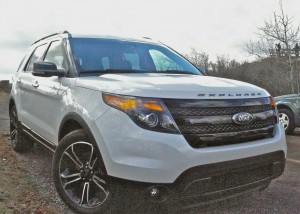
Ford, Mazda and Volvo were closely aligned affiliates for years, but all are doing well on their own.
By John Gilbert
When Ford Motor Company owned Volvo and had a solid percentage of Mazda a decade ago, all three seemed to be thriving, as Ford used those two affiliates in a tight network of platforms and engines that led to some excellent vehicles.
When Ford first brought out the Probe sports coupe, it had a 4-cylinder Mazda engine and a V6 from Ford, and Mazda actually built the car for Ford in Flat Rock, Mich. Later, Ford saw that Mazda was building the Tribute compact SUV, which was exactly what Ford was visualizing, so they collaborated and Ford built both the Tribute for Mazda and the Escape for itself. Mazda supplied Ford with an exceptional 2.0-liter 4-cylinder engine that has evolved into the Ford engine now being turbocharged as the EcoBoost. Ford also brought in the rock-solid Volvo platform to underpin the Edge and the Taurus, and used the same technology for the new Explorer. The very successful European Focus was another example of the global treatment, as Ford equipped its prize compact with the 2.0-liter Mazda engine, and built it on a Volvo S40 platform.
When the economy sputtered, Ford protected its bottom line by divesting itself of its connection to Mazda and ownership of Volvo, and all three went their separate ways. All three continue to build impressive vehicles independently. Ford is doing the best its ever done, making major headlines with its EcoBoost powerplants. Mazda has continued to make breakthrough engines with its new Skyactiv technology. And Volvo has improved its breed, agreeing to be bought by a Chinese holding company that owns Geely, a Chinese car company. All Volvo needs to continue building strong, safe vehicles is financial support, and the Chinese ownership can provide that.
That makes it interesting to take a look at what the three are doing in the midsize SUV market segment, where they used to collaborate.
FORD EXPLORER
The Explorer is generally credited with igniting the move down from the largest SUVs to more maneuverable and more efficient midsize vehicles. Since then, Ford has squeezed the Edge, Flex, and Escape in under the Explorer, so the latest Explorer is larger, as if to bridge the gap from midsize to large.
The Explorer benefits from the EcoBoost plan of using smaller-displacement engines, turbocharg them to reclaim the power of larger alternatives. The enlarged Explorer can range from a 2.0 EcoBoost four, to a 3.5 V6 with 290 horsepower, and all-new for 2013 is the Explorer Sport, a specialty SUV with blacked out grille and lower front fascia, and the 3.5-liter EcoBoost V6.
The Sport 2.0 engine, with twin turbocharging, delivers 350 horsepower and 350 foot-pounds of torque, increasing towing capacity to 5,000 pounds. A 6-speed automatic transmission with steering wheel paddles is well coordinated with Ford’s terrain management system, which seems to be a thinly disguised copy of the system used by Range Rover — another marquee Ford owned but recently sold. Settings for smooth pavement, foul weather, and even off-road terrain are available at the twist of a console knob. The Sport package also has a stiffer suspension with specially tuned steering, and unique 20-inch wheels. Read more


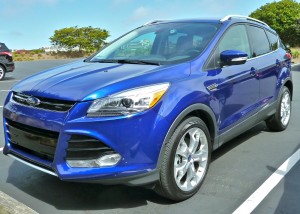
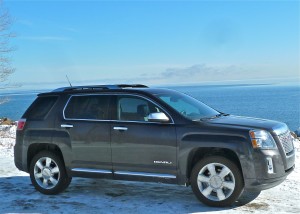
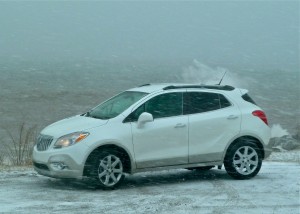
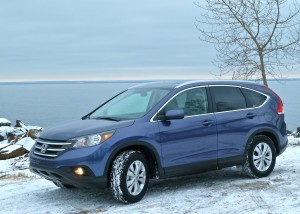
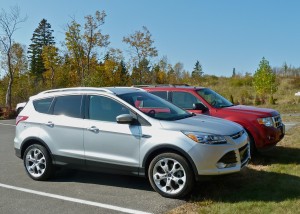
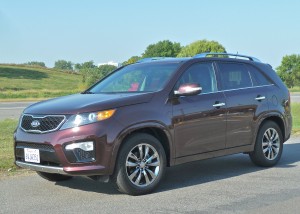
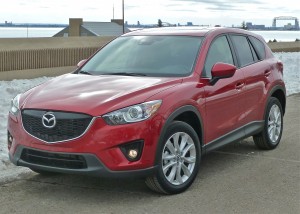
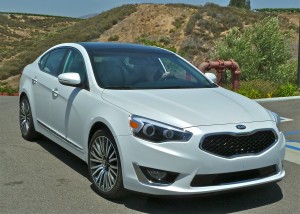
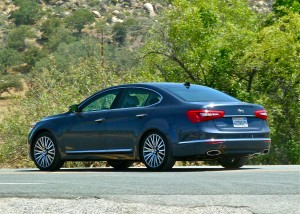
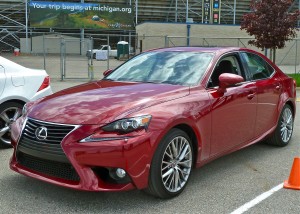
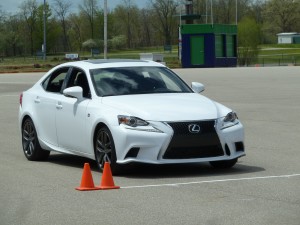
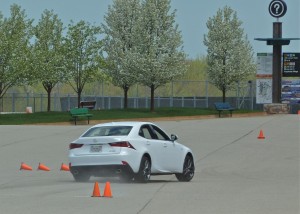
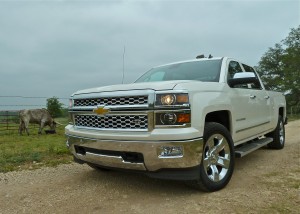
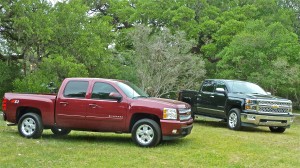
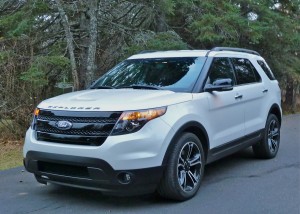
 John Gilbert is a lifetime Minnesotan and career journalist, specializing in cars and sports during and since spending 30 years at the Minneapolis Tribune, now the Star Tribune. More recently, he has continued translating the high-tech world of autos and sharing his passionate insights as a freelance writer/photographer/broadcaster. A member of the prestigious North American Car and Truck of the Year jury since 1993. John can be heard Monday-Friday from 9-11am on 610 KDAL(www.kdal610.com) on the "John Gilbert Show," and writes a column in the Duluth Reader.
John Gilbert is a lifetime Minnesotan and career journalist, specializing in cars and sports during and since spending 30 years at the Minneapolis Tribune, now the Star Tribune. More recently, he has continued translating the high-tech world of autos and sharing his passionate insights as a freelance writer/photographer/broadcaster. A member of the prestigious North American Car and Truck of the Year jury since 1993. John can be heard Monday-Friday from 9-11am on 610 KDAL(www.kdal610.com) on the "John Gilbert Show," and writes a column in the Duluth Reader.